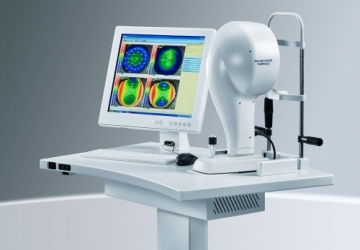
In the corneal topography test, the refractive strength and the topographic structure of the cornea of the eye are measured, which makes up the bulk of the refractive power of the eye.
And with the question of Dr. Muhammad Hantira - Honorary Assistant Professor - Department of Ophthalmology - Umm Al-Qura University - Saudi Arabia
Explain that during the test a person sits in front of a device that emits concentric rings of light onto the cornea. These light rings are reflected on the cornea and when they are turned back, they are received by the device itself, then the device processes them, so that they are scattered between the returning rings, the distance between them and the change in their shape indicates the extent of the curvature and the strength of the refraction of the cornea.
The results are translated into a topographic map, which is displayed as icons and colors. Whereas, soft colors, such as purple and blue, indicate weak refractive power and a flatter corneal structure, and warm colors, such as orange and red, indicate more refractive strength and a more convex corneal structure.
Warnings
In this test there is no risk
• During pregnancy.
• There are no problems or special effects during pregnancy.
• Babies and children
• Cooperation on the part of the patient is needed during the test, so it cannot be performed on uncooperative infants and young children.
• Elderly people have no problems or special effects.
Examination results
There is a field that defines valid values. The doctor interprets the test results according to the rest of the data obtained in the test.
Analysis of the results
This test provides information about the structure and refractive strength of the cornea